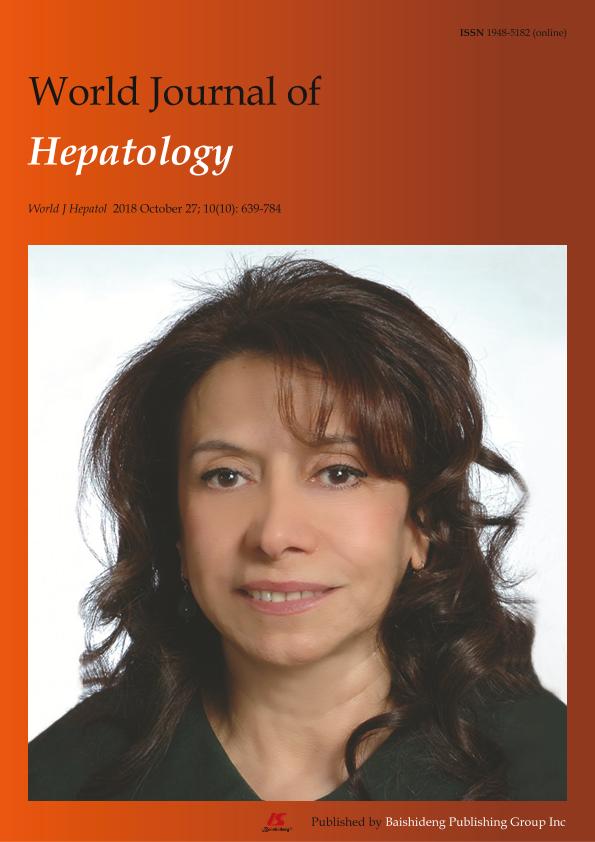Mostrar el registro sencillo del ítem
dc.contributor.author
Pizarro, María Dolores

dc.contributor.author
Mamprin, María Eugenia

dc.contributor.author
Daurelio, Lucas Damian

dc.contributor.author
Rodriguez, Joaquin Valentin

dc.contributor.author
Mediavilla, Maria Gabriela

dc.date.available
2019-11-19T23:05:07Z
dc.date.issued
2018-10
dc.identifier.citation
Pizarro, María Dolores; Mamprin, María Eugenia; Daurelio, Lucas Damian; Rodriguez, Joaquin Valentin; Mediavilla, Maria Gabriela; Experimental bio-artificial liver: Importance of the architectural design on ammonia detoxification performance; Baishideng Publishing Group Co; World Journal of Hepatology; 27; 10; 10-2018; 719-730
dc.identifier.issn
1948-5182
dc.identifier.uri
http://hdl.handle.net/11336/89247
dc.description.abstract
AIM To determine the influence of the construction design over the biological component's performance in an experimental bio-artificial liver (BAL) device. METHODS Two BAL models for liver microorgans (LMOs) were constructed. First, we constructed a cylindrical BAL and tested it without the biological component to establish its correct functioning. Samples of blood and biological compartment (BC) fluid were taken after 0, 60, and 120 min of perfusion. Osmolality, hematocrit, ammonia and glucose concentrations, lactate dehydrogenase (LDH) release (as a LMO viability parameter), and oxygen consumption and ammonia metabolizing capacity (as LMO functionality parameters) were determined. CPSI and OTC gene expression and function were measured. The second BAL, a "flat bottom" model, was constructed using a 25 cm2 culture flask while maintaining all other components between the models. The BC of both BALs had the same capacity (approximately 50 cm3) and both were manipulated with the same perfusion system. The performances of the two BALs were compared to show the influence of architecture. RESULTS The cylindrical BAL showed a good exchange of fluids and metabolites between blood and the BC, reflected by the matching of osmolalities, and glucose and ammonia concentration ratios after 120 min of perfusion. No hemoconcentration was detected, the hematocrit levels remained stable during the whole study, and the minimal percentage of hemolysis (0.65% ± 0.10%) observed was due to the action of the peristaltic pump. When LMOs were used as biological component of this BAL they showed similar values to the ones obtained in a Normothermic Reoxygenation System (NRS) for almost all the parameters assayed. After 120 min, the results obtained were: LDH release (%): 14.7 ± 3.1 in the BAL and 15.5 ± 3.2 in the NRS (n = 6); oxygen consumption (μmol/min·g wet tissue): 1.16 ± 0.21 in the BAL and 0.84 ± 0.15 in the NRS (n = 6); relative expression of Cps1 and Otc: 0.63 ± 0.12 and 0.67 ± 0.20, respectively, in the BAL, and 0.86 ± 0.10 and 0.82 ± 0.07, respectively, in the NRS (n = 3); enzymatic activity of CPSI and OTC (U/g wet tissue): 3.03 ± 0.86 and 222.0 ± 23.5, respectively, in the BAL, and 3.12 ± 0.73 and 228.8 ± 32.8, respectively, in the NRS (n = 3). In spite of these similarities, LMOs as a biological component of the cylindrical BAL were not able to detoxify ammonia at a significant level (not detected vs 35.1% ± 7.0% of the initial 1 mM NH4 + dose in NRS, n = 6). Therefore, we built a second BAL with an entirely different design that offers a flat base BC. When LMOs were placed in this "flat bottom" device they were able to detoxify 49.3% ± 8.8% of the initial ammonia overload after 120 min of perfusion (n = 6), with a detoxification capacity of 13.2 ± 2.2 μmol/ g wet tissue. CONCLUSION In this work, we demonstrate the importance of adapting the BAL architecture to the biological component characteristics to obtain an adequate BAL performance.
dc.format
application/pdf
dc.language.iso
eng
dc.publisher
Baishideng Publishing Group Co
dc.rights
info:eu-repo/semantics/openAccess
dc.rights.uri
https://creativecommons.org/licenses/by-nc-sa/2.5/ar/
dc.subject
AMMONIA DETOXIFICATION
dc.subject
BIO-ARTIFICIAL LIVER
dc.subject
CARBAMYL PHOSPHATE SYNTHETASE I
dc.subject
DEVICE DESIGN
dc.subject
ORNITHINE TRANSCARBAMYLASE
dc.subject
RAT LIVER MICROORGANS
dc.subject.classification
Métodos de Investigación en Bioquímica

dc.subject.classification
Ciencias Biológicas

dc.subject.classification
CIENCIAS NATURALES Y EXACTAS

dc.title
Experimental bio-artificial liver: Importance of the architectural design on ammonia detoxification performance
dc.type
info:eu-repo/semantics/article
dc.type
info:ar-repo/semantics/artículo
dc.type
info:eu-repo/semantics/publishedVersion
dc.date.updated
2019-10-24T18:16:47Z
dc.journal.volume
27
dc.journal.number
10
dc.journal.pagination
719-730
dc.journal.pais
Estados Unidos

dc.journal.ciudad
Pleasanton
dc.description.fil
Fil: Pizarro, María Dolores. Universidad Nacional del Litoral; Argentina. Consejo Nacional de Investigaciones Científicas y Técnicas; Argentina
dc.description.fil
Fil: Mamprin, María Eugenia. Universidad Nacional de Rosario; Argentina. Consejo Nacional de Investigaciones Científicas y Técnicas; Argentina
dc.description.fil
Fil: Daurelio, Lucas Damian. Consejo Nacional de Investigaciones Científicas y Técnicas; Argentina. Universidad Nacional del Litoral; Argentina
dc.description.fil
Fil: Rodriguez, Joaquin Valentin. Consejo Nacional de Investigaciones Científicas y Técnicas; Argentina. Universidad Nacional de Rosario; Argentina
dc.description.fil
Fil: Mediavilla, Maria Gabriela. Consejo Nacional de Investigaciones Científicas y Técnicas; Argentina. Universidad Nacional de Rosario; Argentina
dc.journal.title
World Journal of Hepatology
dc.relation.alternativeid
info:eu-repo/semantics/altIdentifier/url/http://www.wjgnet.com/1948-5182/full/v10/i10/719.htm
dc.relation.alternativeid
info:eu-repo/semantics/altIdentifier/doi/http://dx.doi.org/10.4254/wjh.v10.i10.719
Archivos asociados
